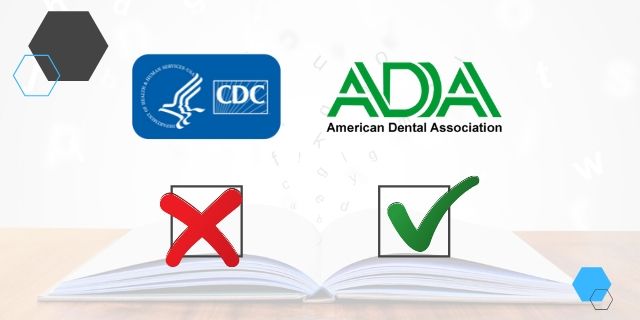
In a recent update to it’s Guidance for Dental Settings, the CDC has removed the 15 minute wait time between patients after dental aerosol generating procedures.
The ADA countered by advising against this.
CDC Updates Dental Setting Recommendations
The CDC updated dental aerosol and engineering controls (mostly related to air filtration) and stated the following:
- The recommendation to wait 15 minutes after completion of clinical care and exit of each patient without suspected or confirmed COVID-19 to begin to clean and disinfect room surfaces has been removed to align with CDC Interim Infection Prevention and Control Recommendations for Patients with Suspected or Confirmed Coronavirus Disease 2019 (COVID-19) in Healthcare Settings.
- The time period recommended for patients to inform the dental clinic if they develop symptoms or are diagnosed with COVID-19 following a dental appointment has been changed to 2 days to align with CDC’s Healthcare Personnel with Potential Exposure Guidance.
- Clarifying language has been added to Engineering Controls.
Here’s a simplified version of the “Engineering Controls” updates below:
- Ventilation systems that provide air movement in a clean-to-less-clean flow direction reduce the distribution of contaminants and are better at protecting staff and patients. (This is basically referring to HEPA air filtration devices)
- Limit the use of demand-controlled ventilation (thermostat/temperature operated systems)
- Consider the use of a portable HEPA air filtration unit while the patient is undergoing, and immediately following, an aerosol-generating procedure.
- Select a HEPA air filtration unit based on its Clean Air Delivery Rate (CADR). The higher the CADR, the faster the air cleaner will work to remove aerosols from the air.
- You can check out our tool that calculates the “CADR” or Air Changes per Hour Rate here: https://www.vaniman.com/air-changes-per-hour-calculator/
- Or, our Settle-Time Calculator for filtration removal efficiency here: https://www.vaniman.com/settle-time-calculator-for-dentists/
- (Not to brag but our Pure Breeze HEPA Air Purifier boasts a CADR of 550 cfm with an (ACH) of 37.5 for standard operatory rooms.)
ADA Responds to CDC Update
The ADA responded to the CDC update with the following:
“The ADA advises that it is still important to wait before disinfecting patient treatment rooms after aerosol-generating procedures, even though the U.S. Centers for Disease Control and Prevention recently removed a recommendation calling for a 15-minute waiting period in its Guidance for Dental Settings.”
Dr. Kirk Norbo, co-chair of the ADA’s Task Force on Dental Practice Recovery agreed, stating, “While there is no strong evidence that supports a one-size-fits-all 15-minute waiting period recommendation, it’s still very important to allow some time for aerosol droplets to settle prior to disinfection of the room to reduce the potential for virus transmission. How much wait time is needed before disinfecting patient treatment rooms is dependent on a number of variables based on the individual practice setting.”
What’s our take on the changes?
The CDC provides recommendations to the best of their ability but the ADA has always been focused on dental worker health. I would err on the side of caution and agree with the ADA position here.
Droplet settle time is a key factor in dental aerosol control and Dr. Norbo is keen to point this out. We’ve seen studies from the CDC and others that report an aerosol hang-time of up to 3 hours.
Keep in mind there is another factor which most don’t consider called re-generation. This is where resting particles are stirred back into the air from things such as walking on carpeting or whisking your hand quickly near a surface.
Because of this, there is a possibility for droplets to reenter the air. This is why using HEPA filtration devices are key to reducing dental aerosols.
Air exchange and source capture help remove contaminants and increase the amount of air changes per hour.
Not to mention, COVID-19 isn’t the only airborne hazard.
Feel free to comment below with your thoughts.
